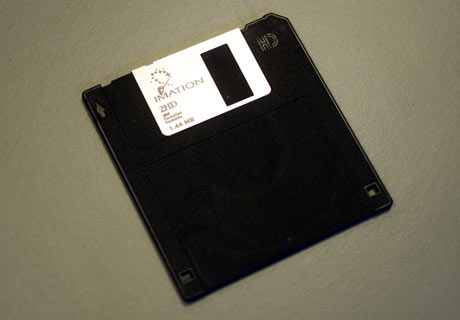Think of it this way:
 1 kilobyte (KB) of memory is not very big, but can hold 1024 characters in a text document. This article is 2607 characters
1 kilobyte (KB) of memory is not very big, but can hold 1024 characters in a text document. This article is 2607 charactersAn image on the Internet is, on average, about 210,933 bytes (~205.99KB)
A floppy disk holds 1,509,949 bytes = 1,474 KB = 1.44 MB
A 5 Megapixel image taken on a digital camera is approximately 3.5 to 5 MB (~5 million bytes)
A CD is 700 MB = ~700 million bytes
A lightning bolt has 1 billion volts (our deficit is over 16,000 lightning bolts measured in volts)
A desktop CPU, or processor, is about 3.0GHz = 3 billion hertz, or 3 billion instruction cycles per second (your smart phone processor is about 1.2GHz, 1.2 billion instruction cycles per second).
A DVD is 4,700 MB = 4.7GB
An average hard drive in a computer system sold is 500 GB = 500 billion bytes
If you buy an extra hard drive, it may be 1,000 GB = 1TB = 1 trillion bytes
 |
| $1 trillion in stacked $100 bills Click for more info |
A server room for a small business of, say, 50-200 people will not have 16 TB of hard drive space. If you go in your office, you would have to gather up 32 to over 100 computers to get 16TB of hard drive space (office computers will have small-ish hard drives)
1 trillion seconds ago is 26,700 BC.
The largest stable star ever found is VY Canis Majoris. It is MASSIVE. It has a radius of 1.227 billion miles and can fit 9.2 billion suns in it (remember, we're dealing with volume, the numbers aren't linear, but volumetric). If it was in our solar system, it would reach beyond Jupiter. Our national debt is 13,039 VY Canis Majoris radii miles wide.
16 trillion is 16x10^12 or 16E12.
One lightyear is 5.878E12 miles. Our national deficit is over 3 lightyears long measured in miles. The nearest star system, Alpha Centauri, is 4.24 lightyears away.
This is STAGGERING. It is no wonder one may not be able to wrap their brain around it.
My guess is that by 2016, our national debt will be...

1 comment:
Great article...it really puts that figure in perspective....it is MIND BOGGLING...when you think of this multiplied almost 17 in the form debt WE OWE!
Post a Comment